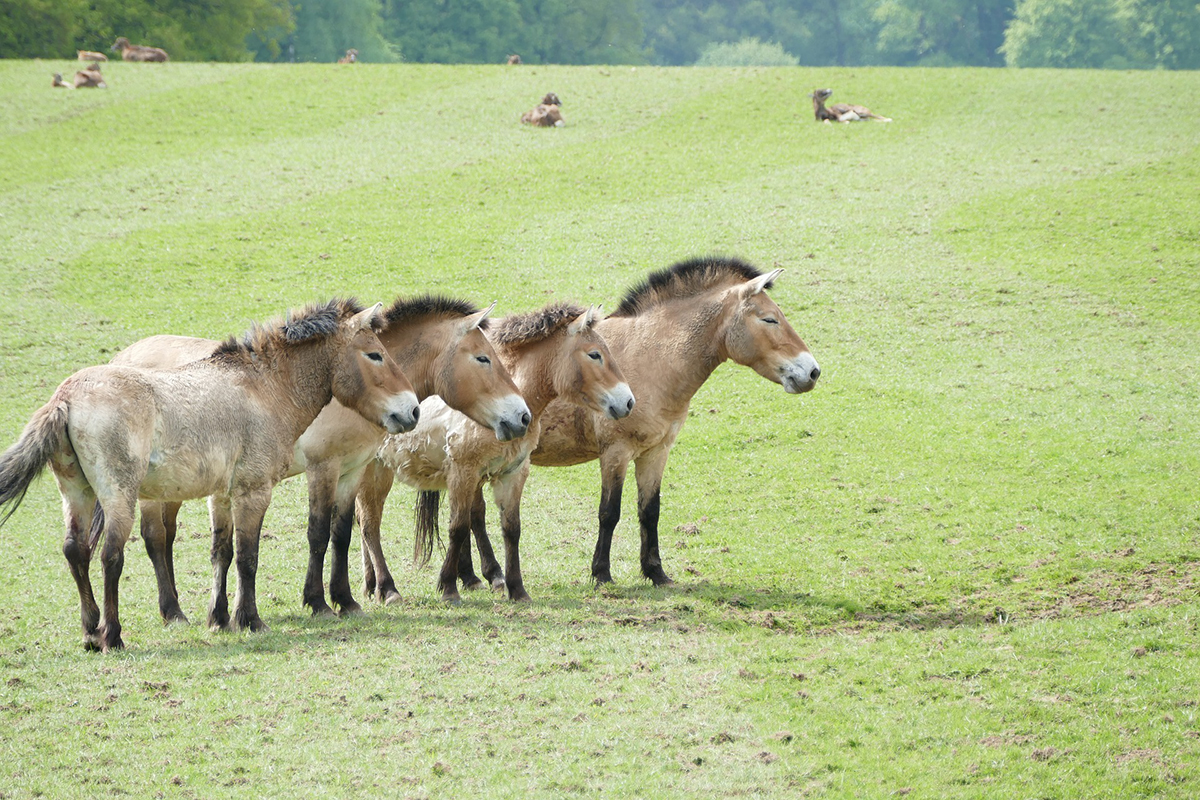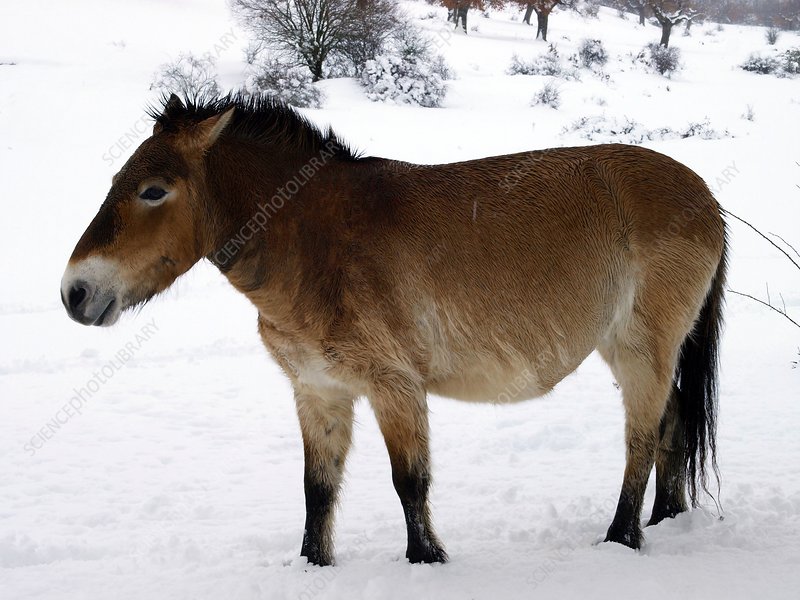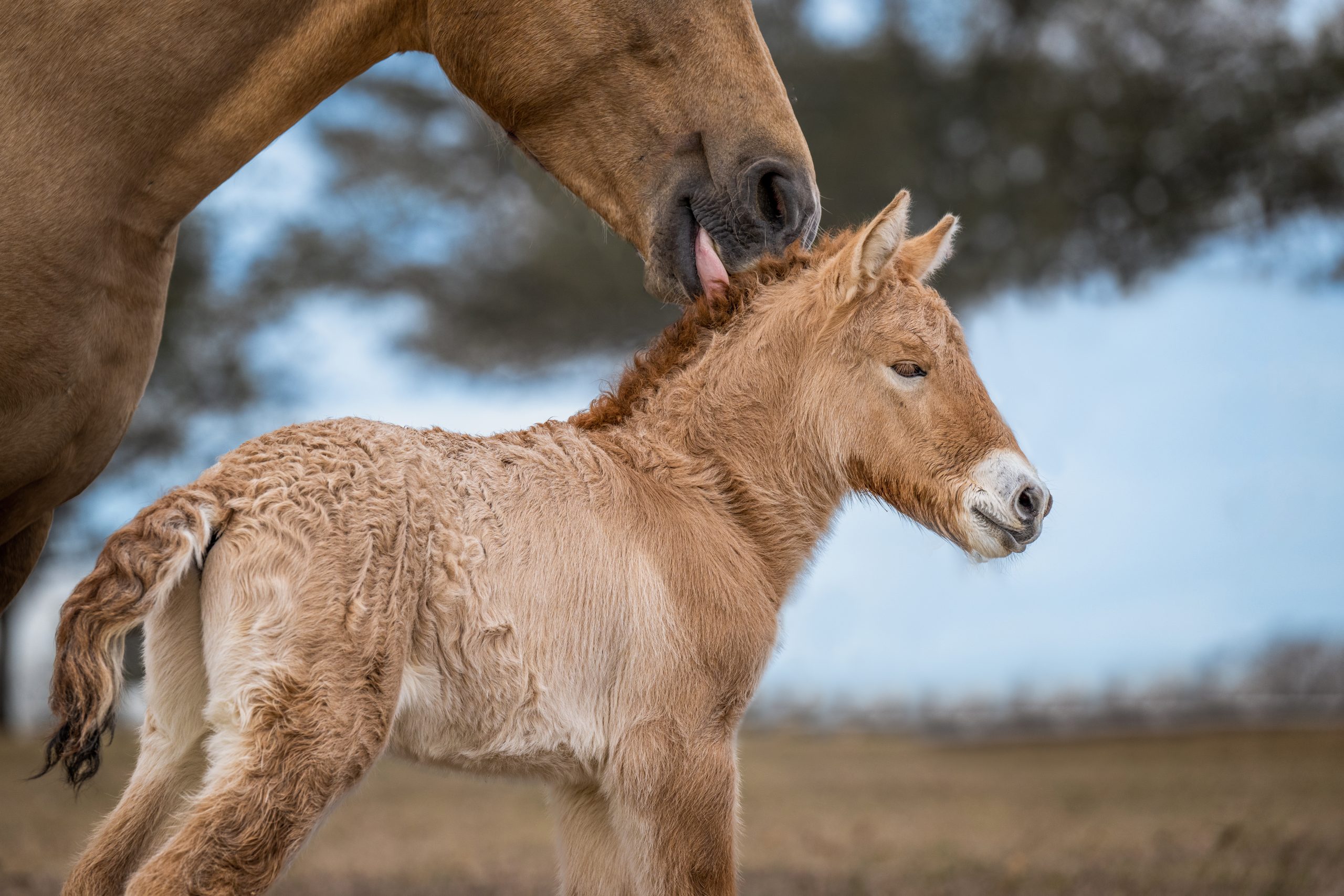The Przewalski’s Horse: The Last True Wild Horse

The Przewalski’s horse (Equus ferus przewalskii), often hailed as the last true wild horse, holds a unique place in the natural world. Unlike domestic horses, this species has never been truly domesticated, preserving its wild genetic lineage and behaviors. Native to the steppes of Central Asia, particularly Mongolia, the Przewalski’s horse is a symbol of successful conservation and a living link to prehistoric equine species.
Historical Background

Named after the Russian explorer Nikolai Przewalski, who first described the species in the late 19th century, these horses once roamed vast areas of Central Asia. However, due to habitat loss, hunting, and competition with livestock, their numbers dwindled dramatically by the mid-20th century, leading to their extinction in the wild by the 1960s.
Physical Characteristics
Przewalski’s horses are stocky and robust, with a distinctive dun coat, erect mane, and a short, thick neck. They typically stand about 12 to 14 hands high (48 to 56 inches) and weigh between 550 to 800 pounds. Their unique physical traits differentiate them from domestic horses and other wild equids.
Conservation Efforts
Thanks to captive breeding programs initiated in zoos worldwide, the Przewalski’s horse was reintroduced into its native habitats starting in the 1990s. These efforts have been supported by international organizations and local governments, focusing on habitat restoration and protection. Today, the species is classified as endangered but stable, with several hundred individuals living in the wild.
Ecological Importance
As grazers, Przewalski’s horses play a crucial role in maintaining the grassland ecosystems of the Mongolian steppes. Their grazing patterns help control vegetation growth, which benefits other wildlife and supports biodiversity.
Table: Key Facts About Przewalski’s Horse
| Feature | Description |
|---|---|
| Scientific Name | Equus ferus przewalskii |
| Habitat | Mongolian steppes |
| Height | 12-14 hands (48-56 inches) |
| Weight | 550-800 pounds |
| Conservation Status | Endangered |
| Distinctive Features | Dun coat, erect mane, stocky build |
Frequently Asked Questions (FAQ)
Q1: Are Przewalski’s horses truly wild?
Yes, they have never been domesticated and retain their wild behaviors and genetics.
Q2: How were they saved from extinction?
Through captive breeding programs and reintroduction efforts coordinated globally.
Q3: Can they interbreed with domestic horses?
Yes, they can interbreed, but conservationists aim to preserve their pure genetic line.
Q4: Where can I see Przewalski’s horses today?
They can be seen in protected reserves in Mongolia and in several zoos worldwide.
The story of the Przewalski’s horse is a testament to the power of conservation and the importance of preserving wild species. Their survival offers hope and valuable lessons for protecting other endangered animals around the globe.
